Around the world, especially in developing countries such as India, cities are struggling to meet the needs of expanding populations. If current patterns of urban and economic growth persist, it is estimated that by 2025 the number of urban households living in substandard housing could grow from 330 million to 440 million, or 1 in 3 urban residents. As rural land-holding patterns in developing countries become less and less able to support growing populations, millions of migrants have moved to larger cities in hopes of higher wage jobs. The shortage of affordable housing in large developing cities has led to the construction of hundreds of thousands of illegal, structurally unsound dwellings on the city periphery, often built on illegally occupied land. The result is vast expanses of ultra-dense neighborhoods with little to no planning or access to basic utilities and public transportation. In the worst cases, the lowest economic strata construct temporary shelters in interstitial urban open space only to be driven out by city police every several years. India is home to 26 of the world’s 100 fastest growing cities which makes it, along with China, the fastest growing country in the world. The shortage of affordable housing in cities such as Delhi, India has led to the construction of hundreds of thousands of illegal, structurally unsound dwellings on the city periphery, often built on illegally occupied land. The result is vast expanses of ultra-dense neighborhoods with little to no planning or access to basic utilities and public transportation. In the worst cases, the lowest economic strata construct temporary shelters in interstitial urban open space only to be driven out by city police every several years. Thus far the city’s response to the housing crisis has been far from adequate. The housing most often constructed with funding from the city are high-rise apartment blocks which offer no connection with the vibrant Indian street life and quickly develop into “vertical slums.” The little social housing that is provided within the city is already beyond the budgets of the cities foundering economy. Meanwhile, the city’s wealthier residents are moving in droves to newly constructed suburban high-rises as the government turns its back on the rapidly expanding slums. At this point in time, there have been little to no examples of low-rise, high density social housing that incorporate traditional dwelling patterns, access to mobility, or any semblance of healthy urbanity. While there are numerous examples of successful social housing experiments over the last fifty years by architects such as Charles Correa, Balkrishna Doshi, and Alejandro Arevena, the efforts to incorporate their design principles at densities adequate enough to meet the needs of massive, poorer cities such as Delhi are still in their nascent stages. Furthermore, it is doubtful whether these cities have the financial means to implement these denser typologies in an effective manner. The project explores high density social housing models that are affordable to large developing cities such as Delhi, as well as compatible with traditional urban scale and streetscapes.
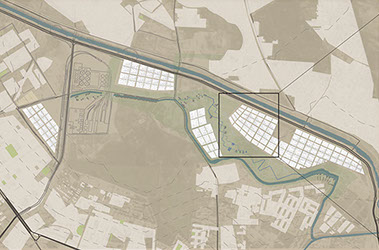
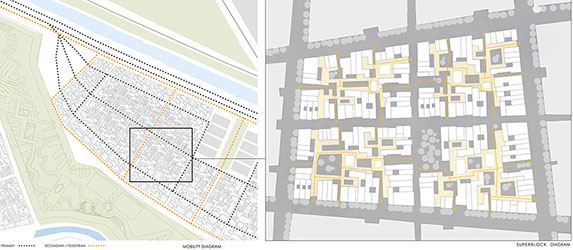
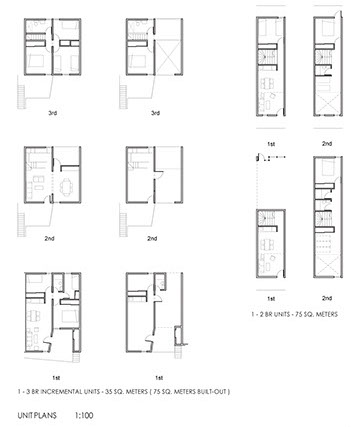
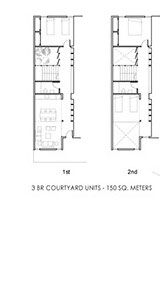
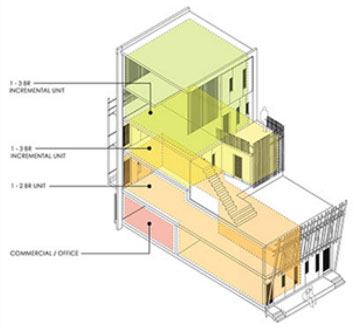


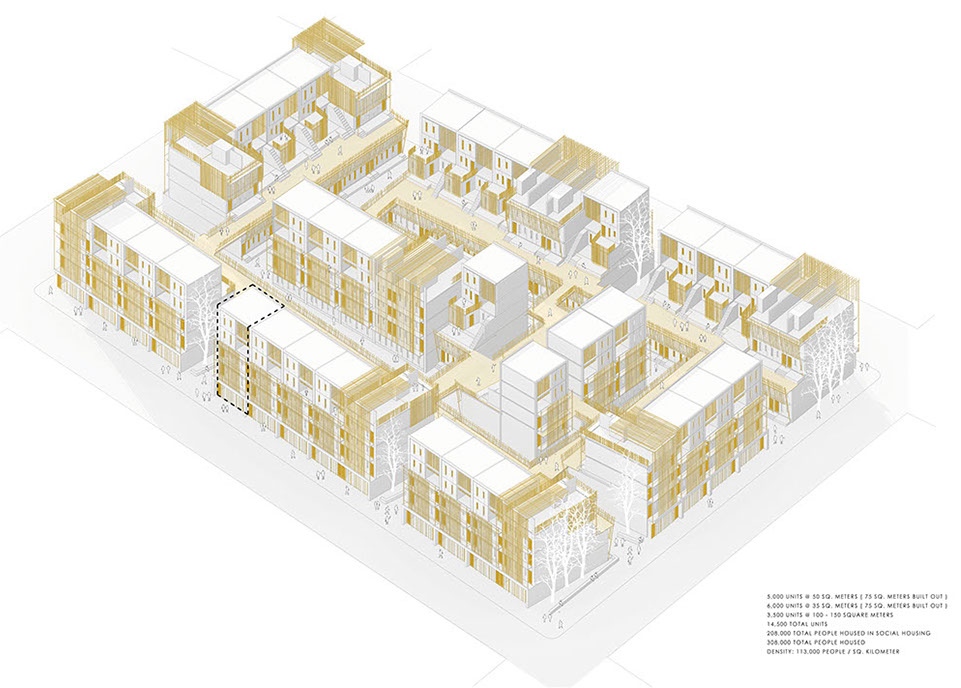
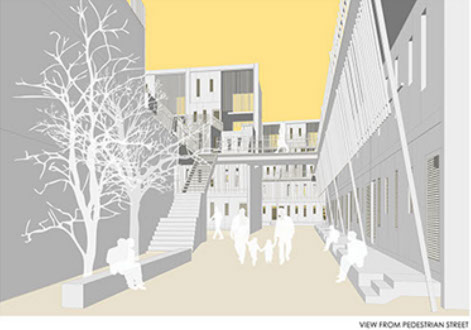
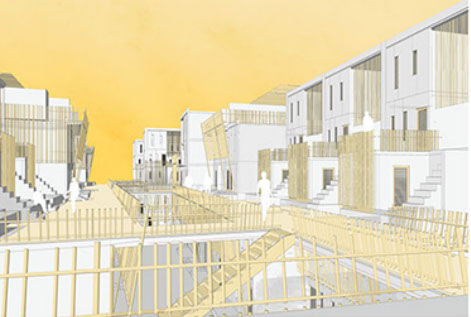
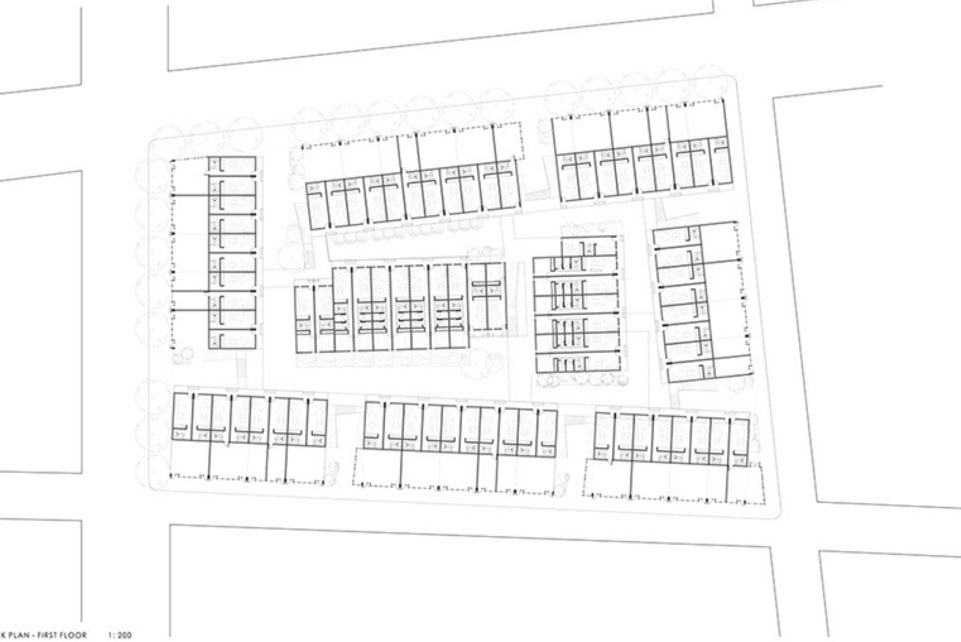
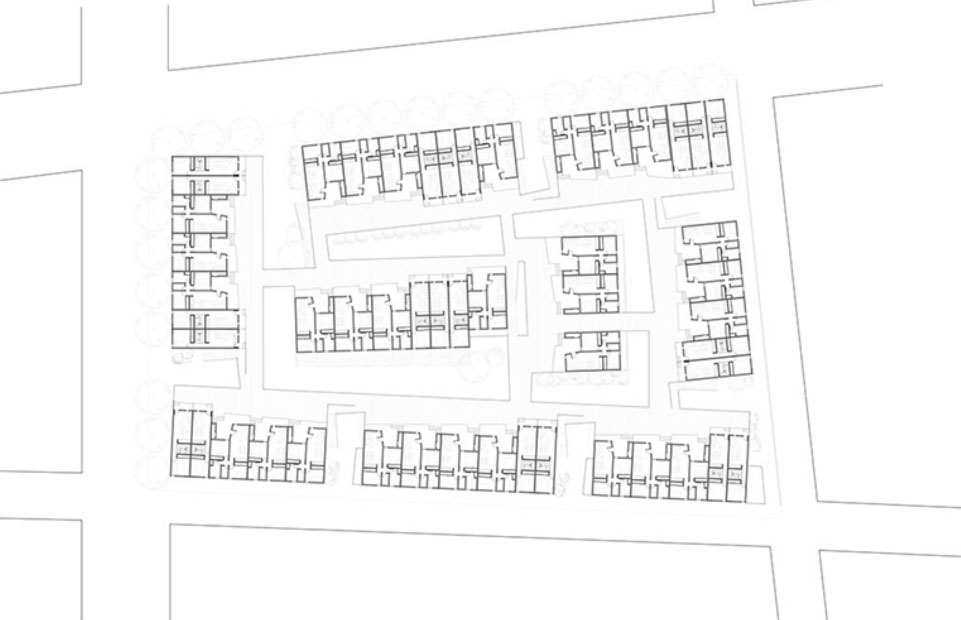
BLOCK PLAN – THIRD FLOOR 1:200
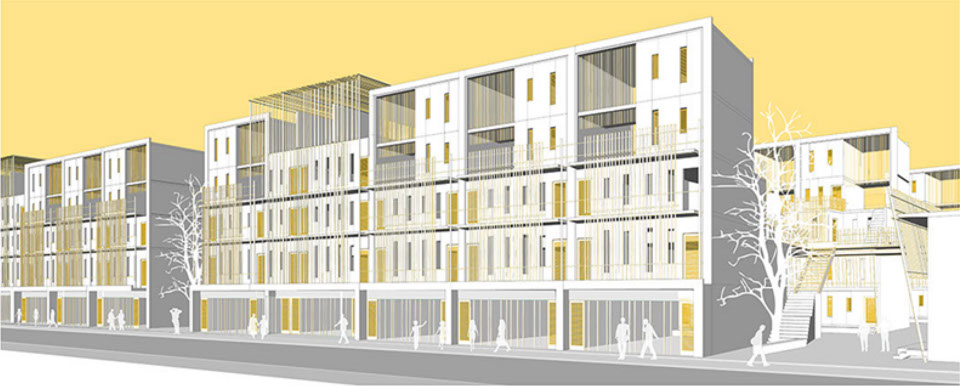

TYPICAL ELEVATION 1:200

TYPICAL SECTION 1:200





